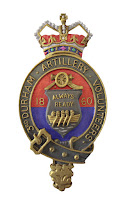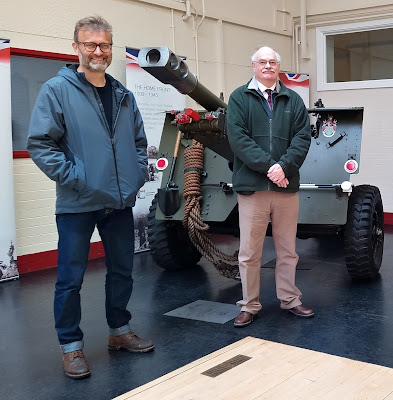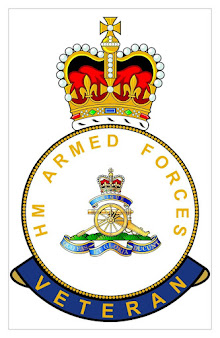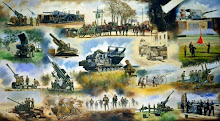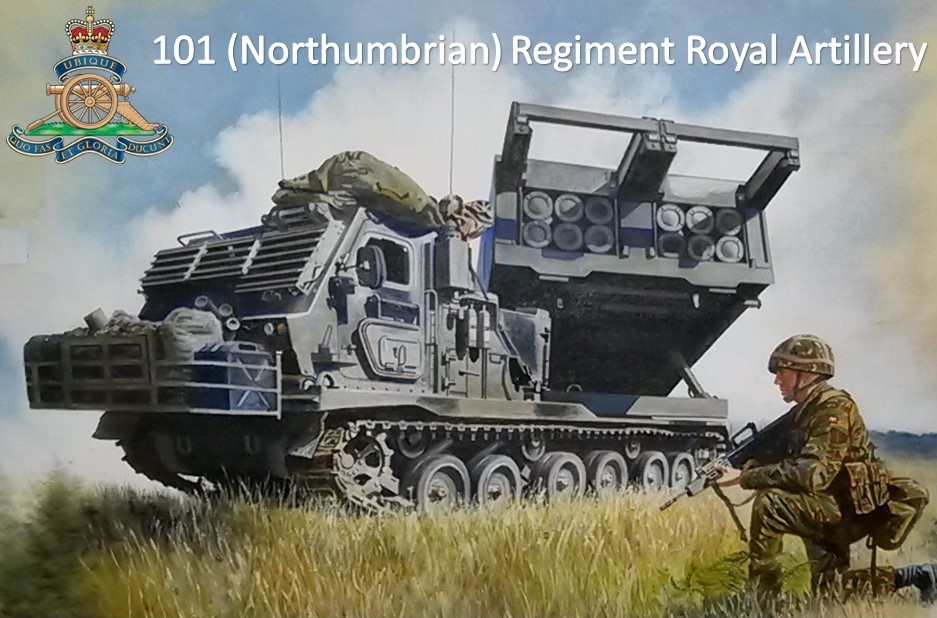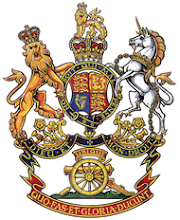Saturday 25 December 2010
Friday 24 December 2010
HMS Ark Royal farewell to the Tyne
HMS Ark Royal's final visit to the Tyne - News - Videos & Photos - ChronicleLive
It is the fifth vessel to bear the proud name. Ark Royal was built by Swan Hunters Ship Builders' yard at Wallsend in December 1978 and launched by Her Majesty Queen Elizabeth the Queen Mother. HMS Ark Royal was accepted into service on 1 July 1985 and finally Commissioned, again by Her Majesty Queen Elizabeth the Queen Mother on 1 November 1985.
HMS Ark Royal is.4 metres (693 feet) long, has a maximum beam of 35 metres (114.7 feet) and a displacement of 20,235 tonnes. She is powered by 4 Olympus gas turbine engines (like Concorde's), which give a maximum speed in excess of 30 knots. A steeper ski jump than in the other ships of this class is fitted at the forward end of the flight deck.
HMS Ark Royal
Ex Iron Storm Otterburn

The Regiment's two strike Batteries (203 & 205) equipped with MLRS, and the STA Batteries (204 & 269) with thier target acquisition equipment were on exercise Iron Storm in support of the 3rd UK Divisions Artillery Group.
3rd UK Division
On arrival the Commanding Officer welcomed the Old and Bold, before handing over to the Adjutant for the obligatory health and safety briefing. The NVAA were eloquently informed to be careful as "Otterburn had undulating ground” - a fact many Gunners over the years may have noticed!
The Regiments MLRS are capable of firing to a range of 32 Km (20 miles), each of the 12 rockets carrying 644 sub munitions. They are the only unit in the Territorial Army equipped with MLRS and support 39 Regiment Royal Artillery on operations.
The Surveillance and Target Acquisition equipment includes radars and sound ranging equipment able to track and locate anything from heavy artillery to mortars. The STA Batteries support 5th Regiment Royal Artillery on operations

Redesdale Arms Left 3 O clock
Retiring to the First and Last (Redesdale Arms, Northumberland) time to reflect that it was “never like that in my day”.
Tuesday 31 August 2010
South Shields - Trow Rocks

In March 1860 the 3rd Durham Volunteer Artillery received two 32 pounder smooth bore guns with carriages and ancillary stores for drill instruction. Corporal (later Sergeant) Sherwin was attached as a drill instructor, and the first drill was carried out on the 27th March 1860.
3rd Durham Volunteer Artillery firing 21st June 1887
A practice Battery was built for two 64 pounder Rifle Muzzle Loading runs.


Replica Gun Trow Rocks
A Disappearing Gun on Trow Point was first placed there in 1887 when the army were experimenting with coastal defences. The gun was forced down into the pit for re-loading by the recoil after the gun fired, so affording protection to the crew and obscuring the gun from direct enemy fire. The structure was sunk deeply into the ground to accommodate the water upon which the platform rose and fell, actuated by air pressure pumps.Trials of platform took place on 15th and 16th December 1887. It was found that the raising and lowering of the platform was too slow and the system was abandoned in favour of the quicker and cheaper Elswick hydro-pneumatic mounting.
The replica gun was installed in 1997.
South Tyneside information - Trow Rock Floating Platform
Monday 16 August 2010
John Simpson Kirkpatrick - Beach Cemetery Anzac
 There is no difference between the Johnnies and the Mehmets to us wherethey lie side by side here in this country of ours…
There is no difference between the Johnnies and the Mehmets to us wherethey lie side by side here in this country of ours…
You, the mothers, who sent their sons from faraway countries wipe away your tears; your sons are now lying in our bosom and are in peace, after having lost their lives on this land they have become our sons as well."
Wednesday 11 August 2010
John Simpson Kirpatrick - Australian Commemorations

Memorial Staute Melbourne

Memorial Statue Canberra

John Kirpatrick Simpsons medals, death plaque, and identity disk.
1914 / 15 Star
British War Medal
Victory Medal with Mentioned in Despatches
Australian National War Memorial
Private John Simpson
3 Field Ambulance AIF
John Simpson Kirkpatrick enlisted in the 4th Durham Battery, 4th Northumbrian (County of Durham) Howitzer Brigade Royal Field Artillery in 1908, at the age of 17.
The Man with the Donkey
Sunday 4 July 2010
John Simpson Kirkpatrick "the man with the donkey"
 John Simpson Kirkpatrick was known as "the man with the donkey" and became a national hero in Australia for his deeds in rescuing wounded soldiers during the Gallipoli campaign.
John Simpson Kirkpatrick was known as "the man with the donkey" and became a national hero in Australia for his deeds in rescuing wounded soldiers during the Gallipoli campaign.
He was born in South Shields on 6th July 1892 at 10 Eldon Street, Tyne Dock. He went to school in South Shields, leaving in 1905 to work as a milk float boy.
In 1908 he enlisted in the 4th Durham Battery, 4th Northumbrian (County of Durham) Howitzer Brigade Royal Field Artillery at the age of 17. He attended annual camp 1909in Fleetwood, Lancashire.

In 1909 he joined the Merchant Navy, and ended up in Australia. On the outbreak of war in 1914, he enlisted on the 1st September 1914 with the 3rd Astralian Field Hospital, where he would be employed as a stretcher bearer.

Private Kirpatrick landed in Gallipoli on April 25th 1915 with the ANZAC forces. Whilst tending a wounded man, Kirkpatrick spotted a donkey which he used to bear the casualty. For the next 25 days until his death Private Kirpatrick went out time and time again with his donkey to rescue over 300 men.

Colonel (later General) John Monash wrote: "Private Simpson and his little beast earned the admiration of everyone at the upper end of the valley. They worked all day and night throughout the whole period since the landing, and the help rendered to the wounded was invaluable. Simpson knew no fear and moved unconcernedly amid shrapnel and rifle fire, steadily carrying out his self imposed task day by day, and he frequently earned the applause of the personnel for his many fearless rescues of wounded men from areas subject to rifle and shrapnel fire."
Private J Simpson is recorded as mentioned in despatches in the Supplement to the London Gazette 5th November 1915, page 11003;
In continuation of my Despatch of the 26th
of August, 1915, I have the honour to submit
herewith the following additional names of
Officers, Non-commissioned Officers and Men
whose services, during the operations described
therein, I consider deserving of special mention.
AUSTRALIAN MEDICAL CORPS
Simpson, No 202 Private J.
At the time of his death his mother was living at 14 Bertram Street, South Shields.

Australian Government - John Simpson Kirkpatrick Army Record
John Simpson Kirkpatrick South Shields Memorial
Private John Simpson Kirkpatrick
KIRKPATRICK, JOHN SIMPSON
CWGC Casulaty Details
Australian Army Medical Corps 3rd Field Amb.
Died 19th May 1915 Aged 22
Service number 202
Mentioned in Despatches
Son of Sarah Simpson Kirkpatrick, of 14, Bertram St., South Shields, Durham, England, and the late Robert Kirkpatrick. Private J S Kirkpatrick, served as Private John Simpson and became known as the ''''Man with the Donkey''''.
Simpson landed with the 3rd Australian Field Ambulance on 25 April and by the following day he was leading a donkey carrying lightly wounded from the front line down Monash and Shrapnel Valleys to the beach. In the first three weeks of the campaign he became a familiar sight, always cheerful and oblivious of danger. Simpson was killed on 19 May and was Mentioned in Despatches.
BEACH CEMETERY, ANZAC
Grave I. F. 1.
GALLIPOLI

Gallipoli - Memorial at Anzac Cove
"Those heroes that shed their blood and lost their lives…
You are now living in the soil of a friendly country.
Therefore rest in peace.
There is no difference between the Johnnies and the Mehmets to
 us where
us wherethey lie side by side here in this country of ours…
You, the mothers, who sent their sons from faraway countries wipe away your tears; your sons are now lying in our bosom and are in peace, after having lost their lives on this land they have become our sons as well."
 Ataturk 1934
Ataturk 1934Information
An illustrated life of Simpson, the man wuth the donkey
Australian War Memorial Roll of Honour - John Simpson Kirkpatrick
Australian Government - John Simpson Kirkpatrick Army Record




